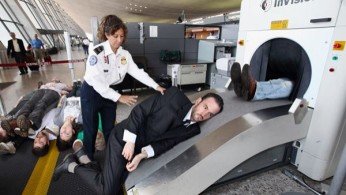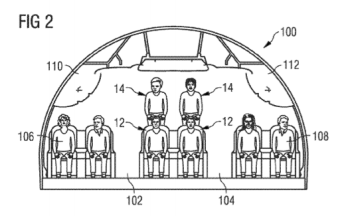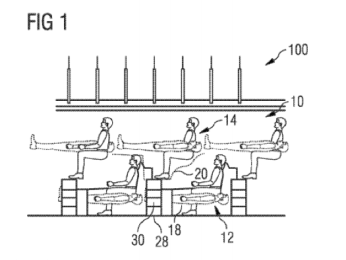By: Quinn Novak,
I spent two solid weeks of my life listening to Sarah Koenig’s melodic voice ring through my headphones. If I had a spare ten minutes during the day, I found myself plugging in and tuning out. Like millions of other people, I was hooked on NPR’s Serial podcast and I needed to know what happened to Hae Min Lee. Did Adnan Syed really kill Hae? Did Jay conspire to kill her? Is Hae still alive and roaming the streets of California with her dad? Spoiler alert: You never find out how Hae died. I was completely devastated and almost hurled my iPad across the room when the final episode ended. Like many Serial listeners, I was left wanting more.
The Serial podcast analyzed Adnan Syed’s 2000 murder conviction of his high school friend, Hae Min Lee, and sparked an influx of further investigation into the murder.[1] In February 2014, the Maryland Court of Special Appeals granted Adnan Syed’s request for review of his case.[2] The court said that the defense should be able to present alibi witness testimony and that these statements could be considered in deliberations on whether Syed deserves a new trial.[3] “The Court of Special Appeals called on the Baltimore Circuit to Court to reopen Syed’s post-conviction hearing so [alibi] testimony could be taken.”[4]
Syed had to petition the Baltimore Circuit Court to grant his hearing [5] and Syed’s new attorney, Justin Brown, filed a motion on August 24, 2014.[6] Although the Maryland Attorney General, Thiru Vignarajah, opposed the motion, the Baltimore Circuit Court granted Syed’s request for a hearing on November 7, 2014.[7]
Syed’s hearing before the Baltimore Circuit Court will allow his lawyer to reopen post-conviction proceedings and introduce new alibi evidence.[8] The hearing will focus on the inadequate legal representation by Syed’s 2000 lawyer, Cristina Gutierez, including the fact that Guitierrez never called alibi witness, Asia McClain.[9] The Serial podcast revealed that Asia McClain had sent several letters to Syed while he was in jail telling him that she remembered seeing him at the public library on the afternoon that the prosecutors claim he killed Hae Min Lee.[10] However, Syed’s lawyer never called McClain to testify about this alibi and the prosecutors actively discouraged McClain to attend post-conviction hearings.[11] If the Baltimore Circuit Court reviews the alibi statements favorably, McClain could finally have her day in court and could offer further insight into the day that Hae Min Lee was murdered.
Another important fact that the Circuit Court hearing will focus on is the unreliability of the AT&T cell phone records that the prosecution used to place Syed’s movements on the day of the murder.[12] Justin Brown submitted a fax cover sheet from AT&T where the company raised the question of reliability of technology in 1999 to pinpoint the location of a cellphone.[13] “Brown obtained an affidavit from the state’s expert witness regarding phone technology, who said he would have wanted to know about [AT&T’s] disclaimer on the fax cover sheet and it would have changed his testimony.”[14] The defense believes that proving the cell phone towers were unreliable to trace Syed’s movements will discredit the prosecution’s theory.
The Serial podcast has played a pivotal role in popularizing Syed’s case and moving towards an appeal. The 1999 murder of Hae Min Lee captivated the nation when the podcast first aired in October 2014.[15] The twelve-episode series was “downloaded millions of times, setting records for a podcast and creating a groundswell of calls for a new trial.”[16] Further, much of the new evidence being presented to the Baltimore Circuit Court was revealed through the podcast’s investigation, such as the circumstantial cell phone tower evidence and potential alibi witness, Asia McClain.[17]
At the end of the day, like so many other listeners and avid followers of Serial, I want closure. Preferably, I would like this closure in the form of a new trial where Jay takes the stand, breaks down in tears on cross-examination, and admits that he framed Adnan and that he killed Hae. Until then, I can dream and attentively keep my ears open for news about this seemingly insignificant case that happened over fifteen years ago.
[1] Serial, NPR (Fall 2014) (downloaded using iTunes).
[2] Bill Chappell, Adnan Syed, Subject of ‘Serial’ Podcast, Gets Hearing on New Evidence, NPR (Nov. 7, 2015, 9:53 AM), http://www.npr.org/sections/thetwo-way/2015/11/07/455123673/adnan-syed-subject-of-serial-podcast-gets-hearing-on-new-evidence.
[3] Justin Fenton, ‘Serial’ figure headed to court after request for hearing granted, Baltimore Sun (Nov. 6, 2015, 9:24 PM), http://www.baltimoresun.com/news/maryland/crime/blog/bs-md-ci-adnan-syed-hearing-granted-2015116-story.html.
[4] Id.
[5] Id.
[6] Juliet Linderman, Adnan Syed Attorney Says Key Evidence Wrong, U.S. News (Aug. 26, 2015, 12:37 PM), http://www.usnews.com/news/articles/2015/08/26/adnan-syed-attorney-says-key-evidence-wrong.
[7] Chappell, supra note 1; Fenton, supra note 2.
[8] Jackie Solo, Adnan Syed Appeal Update 2015: Motion to Reopen Murder Case Granted One Year After ‘Serial’ Podcast, Int’l Bus. Times (Nov. 6, 2015, 5:16 PM), http://www.ibtimes.com/adnan-syed-appeal-update-2015-motion-reopen-murder-case-granted-one-year-after-serial-2173896.
[9] Chappell, supra note 2.
[10] Fenton, supra note 3.
[11] Linderman, supra note 6.
[12] Solo, supra note 8.
[13] Fenton, supra note 3.
[14] Id.
[15] Daniel Kreps, ‘Serial:’ Adnan Syed Allowed to Present New Evidence, Rolling Stones (Nov. 7, 2015), http://www.rollingstone.com/culture/news/serial-adnan-syed-allowed-to-present-new-evidence-20151107.
[16] Fenton, supra note 3.
[17] Kreps, supra note 15.
Photo Source: http://mashable.com/2014/11/06/serial-podcast/#lleMGk9xv8qp






